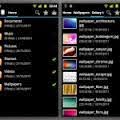Bootable Your pendrive
After a long day i came with article how to boot-able your pen drive for os
Most of the people asking how to boo-table pendrive there are the some tricks and the softwate to see how bootable you pendrives :
There are maney software in the market but if you want free of cost downlode the rufus software free to bootable your pendrive
you can downlode software through this link
Rufus
With that out of the way, let's look at the requirements for Rufus:
Software Product requirement :
Rufus is a small utility that helps format and create bootable USB flash drives, such as USB keys/pendrives, memory sticks, etc.
It can be be especially useful for cases where
Now follow these step to install rufus
There are some links on the site for some helpful tutorials on creating certain types of UFDs, and there's multiple localization support for a variety of languages worldwide.
Most of the people asking how to boo-table pendrive there are the some tricks and the softwate to see how bootable you pendrives :
There are maney software in the market but if you want free of cost downlode the rufus software free to bootable your pendrive
you can downlode software through this link
Rufus
With that out of the way, let's look at the requirements for Rufus:
Software Product requirement :
Rufus is a small utility that helps format and create bootable USB flash drives, such as USB keys/pendrives, memory sticks, etc.
It can be be especially useful for cases where
- you need to create USB installation media from bootable ISOs (Windows, Linux, etc.)
- you need to work on a system that doesn´t have an OS installed
- you need to flash a BIOS or other firmware from DOS
- you want to run a low-level utility
- Rufus requires an account with admin access in order
to make the necessary changes to hardware. After authenticating, insert
the USB flash drive and launch Rufus. It will detect the drive almost
immediately. Since Rufus can handle various partition schemes and file
structures, ensure that the correct settings are set that match the UFD
you're going to build Administrator
- Click
the optical drive button next to the Create a bootable disk using
checkbox, and you'll be prompted to search for the ISO image to use Administrator
- When
using ISO images, Rufus will automatically modify the settings to best
match it. Once everything is set correctly, click the Start button to
begin the process. You'll be prompted with a warning that all data on
the UFD will be destroyed. Click OK to proceed with the creation process Administrator
- Depending
on the ISO image size, the process may take several minutes to
complete. For the log readout of each step in the process, click the Log
button to open a side window and save the output details (Figure D).
Figure DAdministrator - The
longest part of the entire process is the file copy portion. This is
typically the last step and varies depending on file size/number of
files to copy Administrator
- When complete, double-check the external drive to verify the files were copied overAdministrator
There are some links on the site for some helpful tutorials on creating certain types of UFDs, and there's multiple localization support for a variety of languages worldwide.








Comments